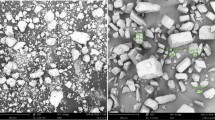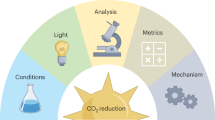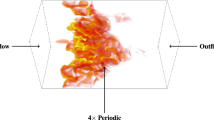Abstract
IN his interesting article1 on “The Condition of Freshly Burnt Gases”, Dr. A. G. Gaydon gives very clear expression to his view that during the combustion of dry carbon monoxide mixtures the freshly formed carbon dioxide is charged with a large excess of vibratory energy which is only very slowly partitioned ; but if the carbon monoxide mixtures are moist, or a little hydrogen is added to them, partitioning of the excess vibratory energy in the carbon dioxide takes place rapidly because of the powerful deactivating influence of water vapour. Experiment, however, seems to indicate that this view is untenable.
This is a preview of subscription content, access via your institution
Access options
Subscribe to this journal
Receive 51 print issues and online access
$199.00 per year
only $3.90 per issue
Buy this article
- Purchase on SpringerLink
- Instant access to full article PDF
Prices may be subject to local taxes which are calculated during checkout
Similar content being viewed by others
References
NATURE, 150, 481 (1942).
Phil. Mag., 15, 177 (1933), Figs. 2 and 4.
NATURE, 150, 291 (1942).
Phil. Trans. Roy. Soc., 228, 197 (1929).
Phil. Trans. Roy. Soc., 230, 363 (1931).
NATURE, 150, 521 (1942), and Phil. Mag., 22, 513 (1936).
Author information
Authors and Affiliations
Rights and permissions
About this article
Cite this article
DAVID, W. Condition of Freshly Burnt Gases. Nature 150, 636 (1942). https://doi.org/10.1038/150636a0
Issue date:
DOI: https://doi.org/10.1038/150636a0



